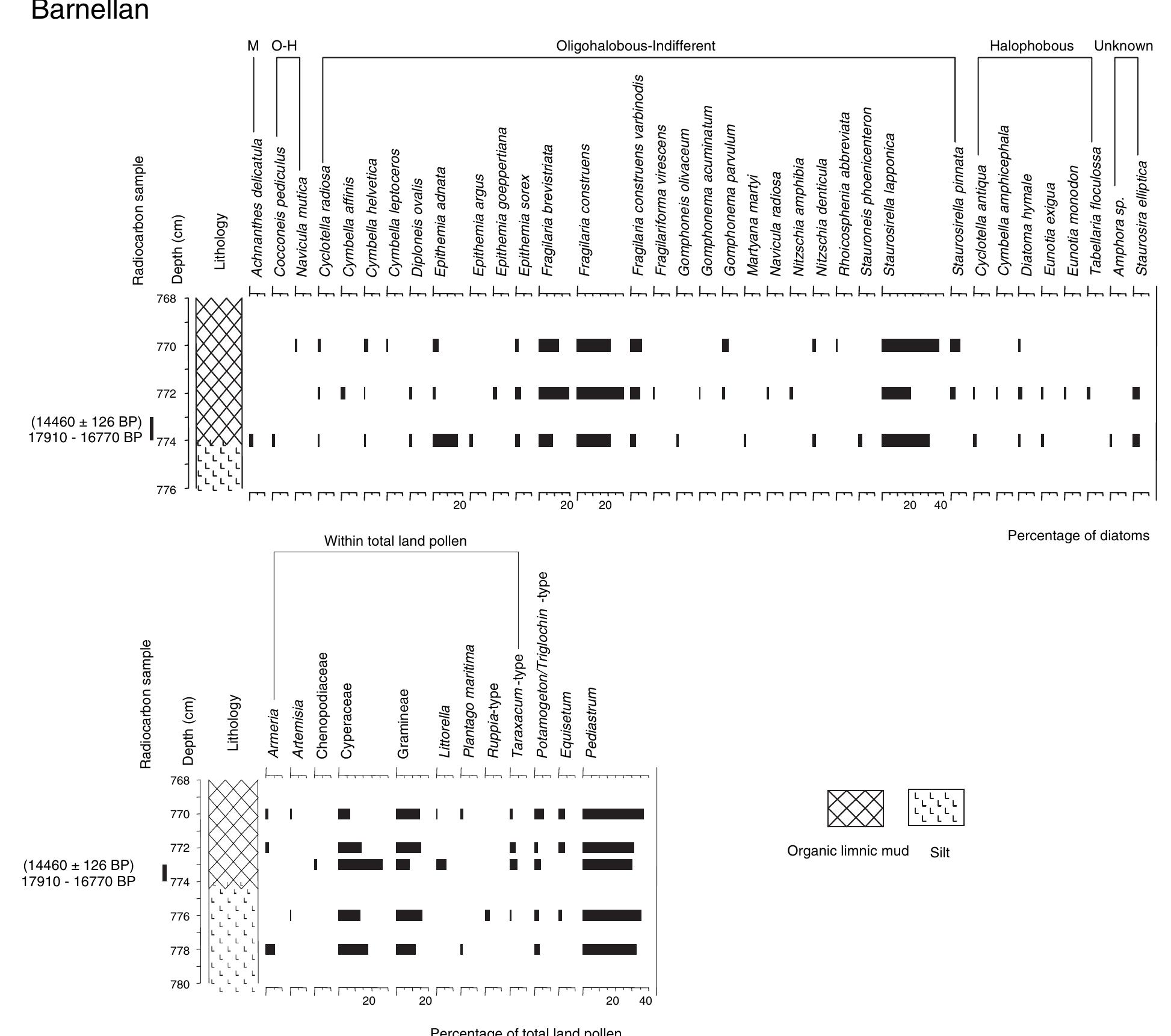Figure 6 – uploaded by Caroline Hillier

Figure 5 Machair Loin microfossil data, lithology and radiocarbon ages. Depths refer to centimetres below ground surface and the sill of the basin lie at 10.5m OD. Radiocarbon ages shown +10 and 95% probability range, yr BP. Pollen data for species >2% total land pollen These are two peat bogs that grade into tidal marshes on the north shore of West Loch Tarbert (Fig. 2). At their seaward end peat overlies thick, impenetrable silt and sand of similar Cores across this sediment-filled depression reveal at least 3m of unconsolidated sediment in the centre of the basin behind a sill at 10.4 + 0.2m OD (Fig. 2). Herbaceous peat at the surface grades down into organic limnic sediment that lies above a basal sand-silt clastic unit. All cores in the centre of the basin bottomed in this impenetrable unit. No diatoms or foraminifera are preserved in this clastic unit but pollen and marine
Related Figures (11)











Connect with 287M+ leading minds in your field
Discover breakthrough research and expand your academic network
Join for free